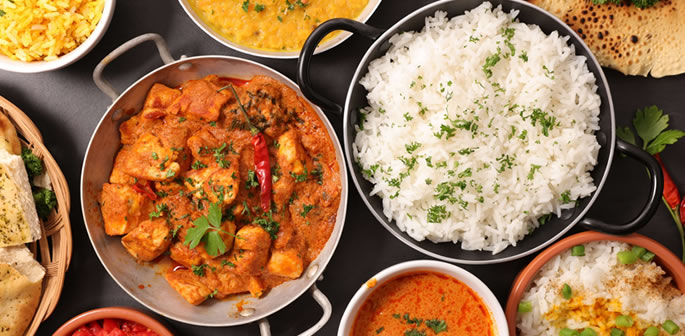For the most part, Serbia's natural landscapes are a great unknown to travellers. One of Europe's best-kept secrets, Serbia boasts crystal clear lakes, forest clad mountains, ice-cold rivers, deep gorges, and countless national parks and conservation areas. In short, this is a landscape crying out to be discovered by walkers and hikers of all levels of aptitude.
- Fruška Gora National Park - Rising out of Srem's vast plains, this is perfect hiking country just 80km from Belgrade.
- Djerdap National Park - This is Serbia's largest national park and home to ten sites of natural heritage, history and beauty.
- Zlatibor and Tara National Park - A popular ski resort in winter, Zlatibor is the perfect place to experience rural life and the hospitality of traditional villages in summer.
- Kopaonik National Park - the beautiful Kopaonik massif, nicknamed the Roof of Serbia – has high-altitude hiking routes that make this a superb spot for summer walking tours.
- Rtanj and the Balkan/Carpathian Mountains - This is the site both of Serbia's largest waterfall and its most arid slopes.
Fruska Gora National Park
Rising out of Srem's vast plains, this is perfect hiking country just 80km from Belgrade. It is characterised by gentle slopes, centuries-old forests, lush vineyards and no less than 16 historic monasteries dating back to the 16th century.
Its highest peak is Crveni Cot (539m) surrounded by plains, vineyards and ecclesiastical spires. There are some 500km of hiking trails within 20 marked routes that thread through this national park. They range from gentle ambles to tracks that need a serious level of fitness.
Try: Strazilovo – Viline vode – Glavica (13 km).
Djerdap National Park
This is Serbia's largest national park and home to ten sites of natural heritage, history and beauty.
The 100km-long Djerdap 'Iron Gates' Gorge, which slices through the border with Romania, is Europe's biggest river gorge. Forest makes up almost 70%, the rest being mostly meadow and rocky habitat.
Over 170 bird species have been recorded here, among them black storks and golden eagles. There are also many large mammals such as lynx and brown bear.
Djerdap's well-maintained trails mean several days are required to do this area justice.
Try: Pećka Bara – Mali Štrbac – Golo Brdo (13.9km) which affords the best views of Djerdap Gorge.
Zlatibor and Tara National Park
A popular ski resort in winter, Zlatibor is the perfect place to experience rural life and the hospitality of traditional villages in summer. This also includes the ethno/artistic village of Drvengrad – 'Timbertown' – built in 2003 by Serbian film director Emir Kusturica for his film Life is a Miracle.
Train lovers will appreciate a ride on the famous Šargan 8 railway – a narrow-gauge train that loops round Mount Mokra Gora in a figure of eight. It has been called Europe's most attractive heritage railway.
Tara National Park is also in this region, arguably the most beautiful place in Serbia. 80% of the park is covered in mixed forests of spruce, fir and beech threaded by 18 hiking trails covering 120km.
Try: Mitrovac – Banjska Stena on Mount Tara affording views of the river Drina.
Kopaonik National Park
Serbia's best known ski resort, the beautiful Kopaonik massif – nicknamed the Roof of Serbia – has high-altitude hiking routes that make this a superb spot for summer walking tours, especially as the mountain clocks up 200 sunny days a year.
Highlights include the 46km Josif Pancic mountain trail where it's possible to hike east towards Semetes Lake and its unusual floating islands for eight to 10 hours or go west for 10-12 hours.
Another route meanders through two nature reserves to Janko's Ponds, leading to archaeological sites called Nebeske Stolice (Celestial chairs) – also a popular spot for paragliding. The region includes several beautiful UNESCO listed monasteries.
Try: The Josif Pancic Trail (46km)
Rtanj and the Balkan/Carpathian Mountains
This is yet another area of great natural beauty. This is the site both of Serbia's largest waterfall and its most arid slopes. Plenty of drinking water is required here when walking to the summit of Suva Planina (Dry Mountain), so named because it lacks any freshwater springs.
Another highlight is a hike to Djavolja Varos (Devil's Town) featuring 200 20m-high earth figures in the Radan Mountain foothills.
Geologists may well explain that these figures were created by erosion, but legend has it that the figures were formed to prevent the Devil from carrying out a wedding ceremony between a brother and sister. To thwart this sin, an otherworldly force turned all the guests to stone. Devil's Town was recently shortlisted as one of the new Seven Wonders of the Natural World.
Try: Gajtanska Vrata – Slišane (16.6 km)
ACCOMMODATION options in rural Serbia are diverse and range from four-star hotels to forest cabins, youth hostels to village tourism – with the latter being the best option for experiencing famed Serbian hospitality.
A traditional welcome to a Serbian village home involves the serving of bite-sized pieces of warm pogača (home-made bread) dipped in salt, followed by slatko, a sweet preserve made from local fruit, or a helping of honey with a glass of chilled spring water. A toast to your health is made with local rakija (Serbian brandy) or wine.
Guests are then served local sir (cottage cheese), kajmak (similar to clotted cream), šunka (ham) or pršut (proscuttio – cured ham).
















